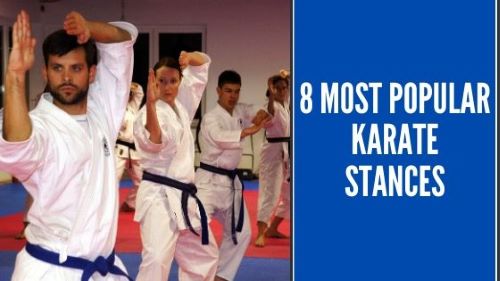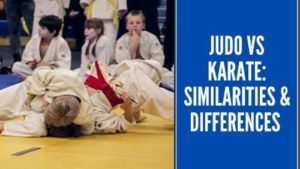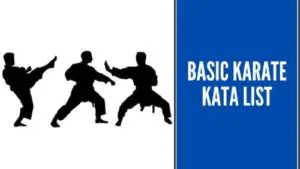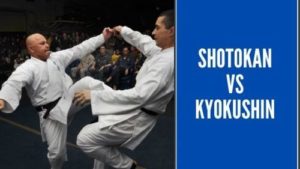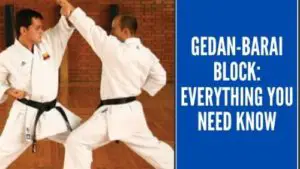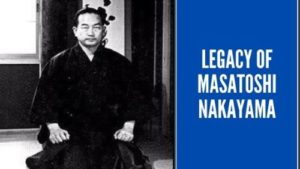Karate martial arts are popular across the world, mainly due to their extensive usage in movies. Karate mostly focuses on striking moves with open-handed techniques that involve kicking, knee, punches, and elbow strikes. In Karate, there are lots of different stances, and each serves a different purpose in terms of defense, movement, and offense.
These stances are the foundation of effective Karate both in terms of biomechanics and self-defense. Also, it’s essential to understand that there is a slight difference from style to style in terms of stances, with each being used for different types of movement and power.
People often confuse different styles of martial karate and interchange their names because many arts use similar techniques. Here is an exclusive look at the topmost popular karate stances.
ZENKUTSU DACHI
Also known as the front stance, Zenkutsu-dachi is among the most popular stances in Karate and has often been used in Japanese action movies. This stance lets you reach far and generate high power to move forward. It is mostly used as a conditioning exercise rather than for Kumite or self-defense.
To perform this stance, you should place your front foot in front and then bend your knee so that you can’t be able to see your front foot. Extend your rear leg and push the ground with it until the rear leg is at an angle of about 15 degrees. Sixty percent of your weight should be distributed on the front leg, while forty percent should be distributed on the back leg.
Pros
- Strengthens and tones the hips, thighs, and glutes
- Improves endurance and stamina
Cons
- Not useful in self-defense
KOKUTSU-DACHI
This stance is commonly referred to as a back stance. It is a defensive position that allows a person to move back quickly, retreat, and counterattack. The karate stance is excellent and effective to enate attack from your opponent.
Performing this stance involves bringing your rear leg backward with your foot at an angle of 45 degrees while keeping your front leg in front, pointing forward. The distance between your feet should be about a half-shoulder width. Distribute your weight to seventy percent on the back foot and thirty percent on the front foot while keeping your back and neck straight.
Pros
- Improves your flexibility
- Enhances muscle toning
Cons
- You might get injured when retreating
MUSUMBI-DACHI
The stance refers to a standing stance, which is the formal way of standing in the Japanese Karate and Japan. The musumbi-dachi is very significant and is used in performing the formal respectful bow known as rei.
This standing stance and rei should be performed before and after warmups, kata, kihon, kumite, or interactions between people. In this stance, you should place your heels together and open your toes at 45 degrees. The arms should be placed alongside your body while keeping your neck and back straight.
Pros
- Enhances mobility and balance
- Acts as a sign of respect to your opponents
Cons
- Has minimum body workout
NEKO-ASHI-DASHI
Neko-Ashi-dashi, also known as the cat stance, is one of the popular karate stances because of its excellent defensive nature. Most of the weight is placed on the back leg, which allows for quick sideways evasions and counterattack with kicks.
To do the stance, you should bring your rear leg backward and your foot at a 45 degrees angle. Pull the front leg back with only the ball of your foot touching the ground while keeping a maximum distance of one shoulder between your rear and front legs. Your weight should be ten percent on the front leg and ninety percent on the back leg.
Pros
- Perfect for self-defense
- Improves mobility, coordination, and reflexes
Cons
- More vulnerable to takedowns
We go over in much more details of the NEKO-ASHI-DASHI stance in this article.
TSURU-ASHI-DACHI
The stance is known as a Crane stance in English. It is used to avoid attack and to transition into other techniques. It involves raising one leg and placing its ankle behind the knee of the standing leg.
The standing leg is bent slightly while keeping the back and neck straight. The pelvis is tilted upward while the lower abdomen is tensed up.
Pros
- Great for self-defense
- Enhances balance and mobility
Cons
- You might get tired faster
KIBA-DACHI / NAIHANCHI-DACHI
The Kiba-dachi is known as the horse stance. This is a crucial position of Karate that is used in practicing basic strikes such as the Seiken Tsuki, integrating into self-defense as well as Kumite practice. Japanese styles do the Kiba-dachi low and wide, while Okinawan techniques do it higher and narrower.
To perform the stance, you should place your feet approximately two shoulder widths apart with the toes facing forward. Bend your knees forward to lower your center of gravity and push the knees towards the outside. Finally, distribute your body weight equally on both legs. The style has minor variations from different schools, such as the height of the stance and distance between the feet.
Pros
- Strong stance in defending against side attacks
- The posture strengthens the legs, back, and the core
Cons
- The stance relies on slow but stronger strikes, which might not always work.
SEIZA
Seiza is a kneeling stance, the traditional, formal, and polite Japanese way of sitting on the floor, kneeling. This stance is a great and fundamental posture in Japanese culture and Karate. The stance is used in performing the formal floor bow, commonly referred to as Zarei.
To perform this stance, you should place your knees on the floor and rest your buttock on the top of your feet. Your feet should be flat on the floor with your back and neck straight, breathing calmly and naturally, and be fully mentally present.
Pros
- Provides great mental focus
Cons
- The position keeps you more vulnerable
KOSA-DACHI
The cross stance is among the most famous karate stances. The stance is very effective and is done for turning, dodging to the side, or when landing from a jump. The stance involves moving your back leg forward, making the back knee to be pushed into the back of the other knee. Keep the front foot flat on the floor, and the ball and toes of the rear foot to touch the ground.
Pros
- Powerful strikes
- Toughens the muscles and bones
Cons
- Poor balance fundamentals
We hope that this article has helped you understand some of the popular variety of stances in Karate. Take your time to improve every position to perfection. Always remember that tilting your pelvis is essential in giving you a more grounded and stable position.
